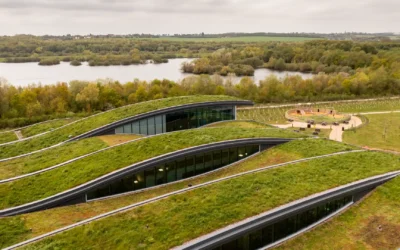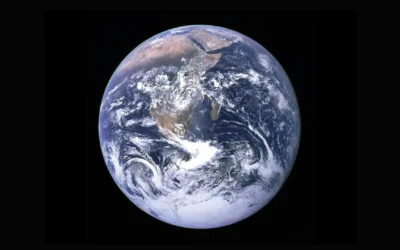• Australia plans to achieve net zero emissions by 2050 and, in pursuit of these goals, the country is installing renewable capacity in the country.
• Owing to the intermittent nature of renewable energy resources, the increased penetration of renewable energy in the generation mix itself will pose challenges to the grid.
• Power Technology Research believes that the BTM battery energy storage market of Australia will thrive in the upcoming decades as it will enable a smooth transition to clean energy.
Australia plans to achieve net zero emissions by 2050 and, in pursuit of these goals, the country is installing renewable capacity in the country, which constituted 29% of the energy mix in 2021. As far as the 2020 Integrated System Plan by Australia’s Electricity Market Operator is concerned, the National Electricity Market needs to install 26-50 GW of large-scale renewable capacity if it is to achieve long term climate goals.
Owing to the intermittent nature of renewable energy resources, the increased penetration of renewable energy in the generation mix itself will pose challenges to the grid, including issues concerning stability and reliability. These problems can be overcome with storage technologies, such as battery energy storage systems (BESS). BESS has the capability to store low cost zero-emission excess renewable energy from the grid to meet periods of peak demand with cheap and clean energy. Over the years, the competitiveness of battery energy storage systems has increased mainly due to cost effectiveness, enhanced capability, and fast response ability.
Overview of the Australian Energy Storage Market
The battery energy storage market of Australia has been observing growth in recent years, with demand originating mainly from the utility sector due to the increased deployment of renewable energy and behind-the-meter applications. For the purpose of this article, we will be covering BTM battery energy storage systems as these systems are deployed in residential areas.
Behind-the-meter market
Behind-the-meter battery energy storage systems dominate the BESS market of Australia. In 2019, around 22,621 BTM battery energy storage systems were installed in the country, followed by the installation of 23,796 BTM battery energy storage systems in 2020. In 2021, a record 34,731 BTM battery energy storage systems were installed in the country due to tremendous growth in the installations of rooftop PV solar with battery storage.

Figure 1: Annual additions in BTM BESS capacity from 2015-2021.
Source: Clean Energy Council

Figure 2: Geographical representation of installed base residential battery energy storage systems in Australia.
Source: Clean Energy Council
In the absence of federal level initiatives on BESS in Australia, states are taking the lead in providing support to the battery energy storage market in the form of incentives and funding for small-scale battery energy storage systems. According to the Clean Energy Australia Report, Victoria and New South Wales installed 9000 BTM battery energy storage systems, with a cumulative storing capacity of 90 MWh. Victoria and New South Wales are followed by Queensland, which installed 6500 BTM battery energy storage systems with a total storing capacity of 65 MWh. Similarly, Western Australia has installed 3000 BTM battery energy storage systems (30 MWh), Tasmania has installed 900 BTM battery energy storage systems (9 MWh) and Northern Territory has installed 300 BTM (3 MWh).
State Government Incentives and Funding for BESS in Australia
State governments have taken the lead in introducing policies and offering incentives for the battery energy storage systems in the country, resulting in continuous growth for the behind-the-meter market, especially in the last three years.
New South Wales
New South Wales has a program named ‘Empowering Homes’ for providing loans that cover the upfront costs for the installation of solar and battery storage systems. The loan provided under this scheme is interest free and has a cap of up to USD 14,000. The scheme was originally introduced to increase the deployment of residential battery storage in the state of New South Wales in Australia.
South Australia
South Australia has been incentivizing the deployment of battery energy storage systems in the state since 2015, when it announced an incentive of USD 5,000 for homes, schools, and businesses to install battery storage. This was followed by the introduction of a subsidy for 40,000 households for the installation of home energy storage systems in 2018.
The subsidy was worth USD 100 Million and aimed to provide USD 6,000 worth of maximum incentive to each household.
Queensland
Renewables in Queensland’s energy mix account for 20 percent and the state has introduced policies and incentives to support the installation of PV solar at the residential level. However, no major scheme for residential battery storage has been introduced so far.
Looking Ahead
Spikes in input fuel prices globally have led to the cost of electricity in Australia increasing in the short-term. The increased penetration of renewables in the country’s energy mix will exacerbate this issue and is expected to lead to increasing electricity costs in the long run as well. This, along with changing tariff structures and a drop in the cost of battery energy storage, has set the stage for continuous growth in BTM battery energy storage market. The increased deployment of BTM battery energy storage is expected to not only reduce transmission constraints but also allow the system to avoid curtailing renewable generation during periods of excess generation. Power Technology Research believes that the BTM battery energy storage market of Australia will thrive in the upcoming decades as it will enable a smooth transition to clean energy.
Energy Storage Service Overview
The research presented in this article is from PTR's Energy Storage service. For information about this service please submit a request shown below.
Contact Sales:
Europe
+49-89-12250950
Americas
+1 408-604-0522
Japan
+81-80-7808-1378
GCC/Rest of APAC
+971-58-1602441
More about our:
Energy Storage Market Research
Recent Insights
Sustainability Across Sectors: Highlights from GreenTech Festival 2024
Recently, I had the privilege to attend and present at the Greentech Festival, an excellent event in the realm of sustainability. This influential...
US and EU Strategies in Smart Buildings
Download Service Overview The EU and USA aim to decarbonize their building sectors to meet emission reduction targets. Initiatives like the Home...
COP through the Ages
This infographic takes a cursory glance at the most significant achievements of the Conference of Parties through the years and offers a chance for...


